It came very close to overhauling Mercedes for the runner-up spot to the dominant Red Bull.
Let’s take a detailed look at some of the car’s finer details in full.

Photo by: Giorgio Piola
Ferrari SF23 front wing comparison
The SF-23’s nose assembly differed from its predecessor by virtue of its length, as the tip is no longer connected to the mainplane.

Photo by: Giorgio Piola
Ferrari SF-23 S-duct detail
The SF-23 had an interesting feature that was unique to Ferrari and allowed airflow captured below the inlet to escape into the upper surface of the sidepod.
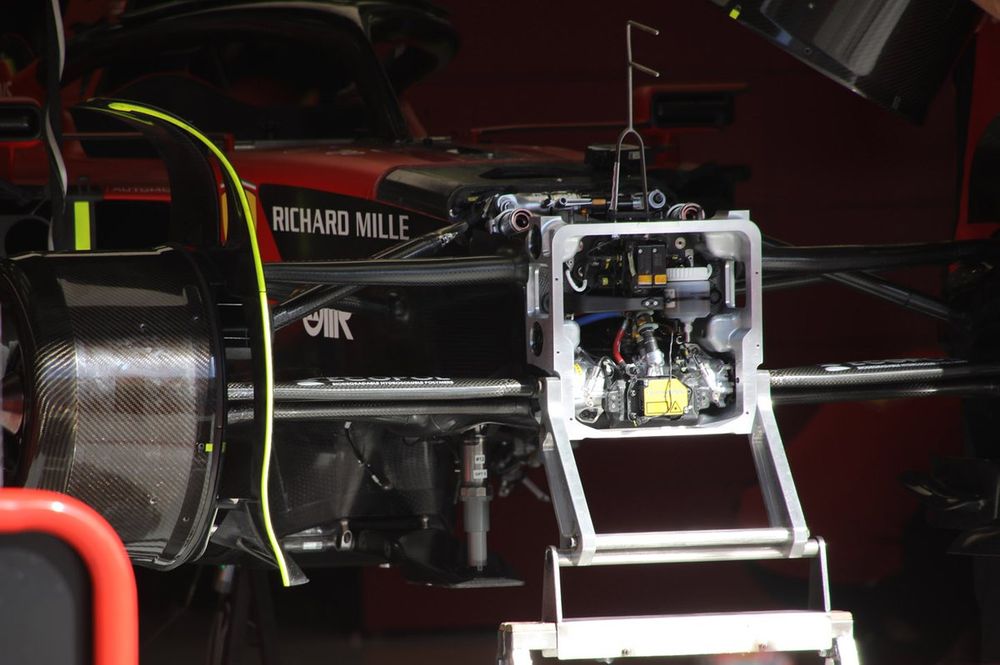
Photo by: Giorgio Piola
Ferrari SF-23 technical detail
The SF-23 without some of the lower chassis bodywork in place allows us to see the internal bib structure and the sprung stay that connects it to the underside of the chassis.

Photo by: Mark Sutton / Motorsport Images
Carlos Sainz, Ferrari SF-23, rear wing detail
The SF-23’s rear wing with DRS in use.

Photo by: Giorgio Piola
Ferrari SF-23 technical detail
The SF-23’s chassis dips down to allow the lower wishbone to be positioned lower.
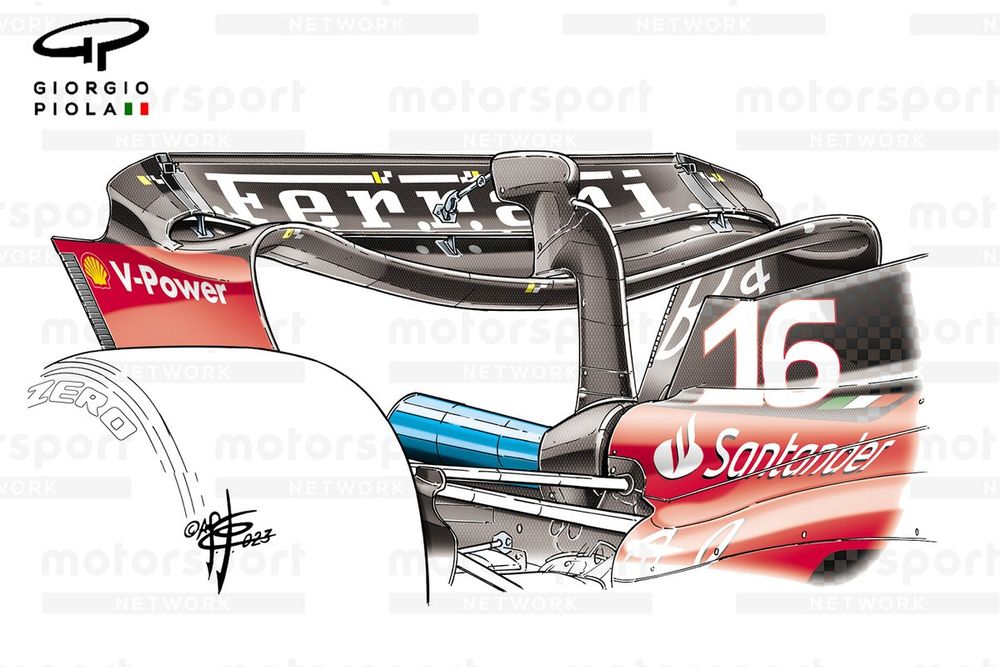
Photo by: Giorgio Piola
Ferrari SF-23, new rear wing
Ferrari introduced a new rear wing at the Saudi Arabian Grand Prix, which featured a single central support pillar, rather than the twin pillar arrangement.

Photo by: Giorgio Piola
Ferrari SF-23, old rear wing
The older specification rear wing with the twin pillar arrangement.
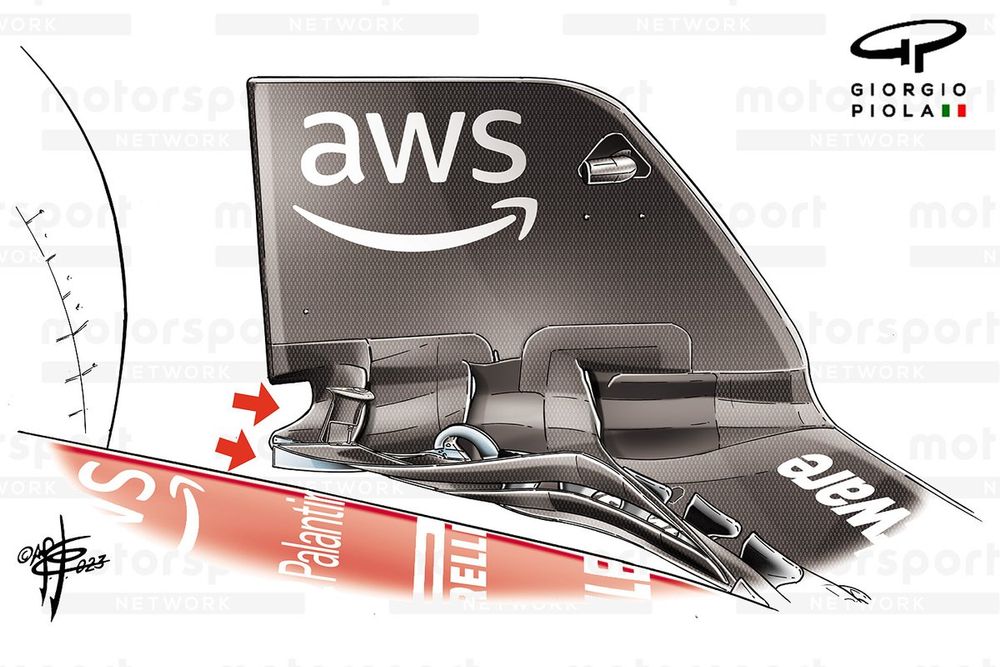
Photo by: Giorgio Piola
Ferrari SF-23 front wing end plate detail
Ferrari took a nibble out of its front wing endplate as part of an update for the Saudi Arabian Grand Prix, with the C-shaped cutout in the lower corner likely targeting an improved outwash effect.
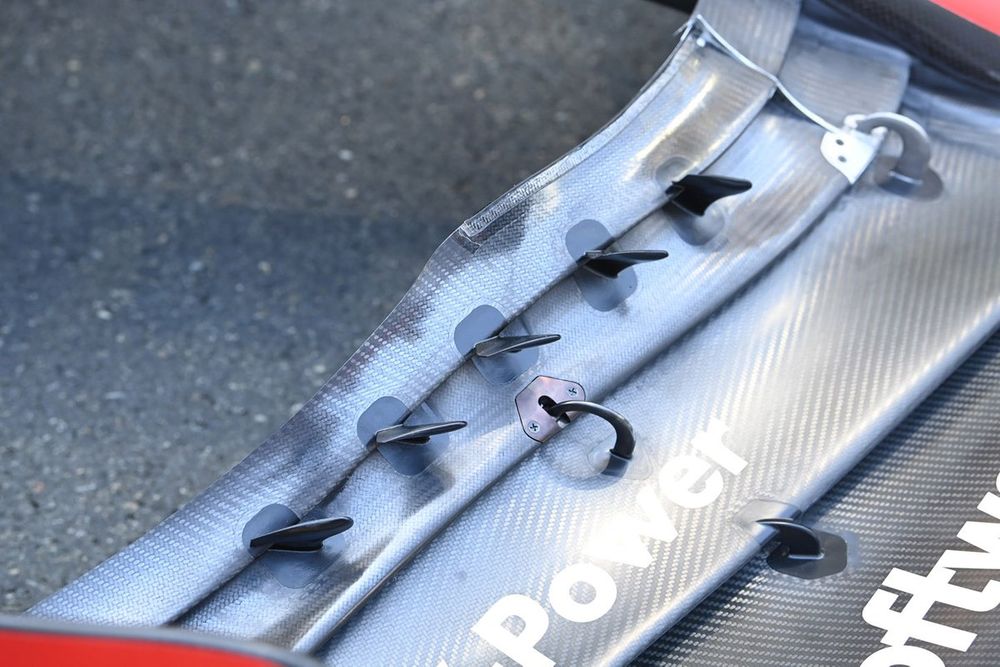
Photo by: Uncredited
Ferrari SF-23 technical detail
A close up of the slot gap separator brackets installed on the SF-23’s front wing, which offer more aerodynamic support than the regular horseshoe-style brackets would.
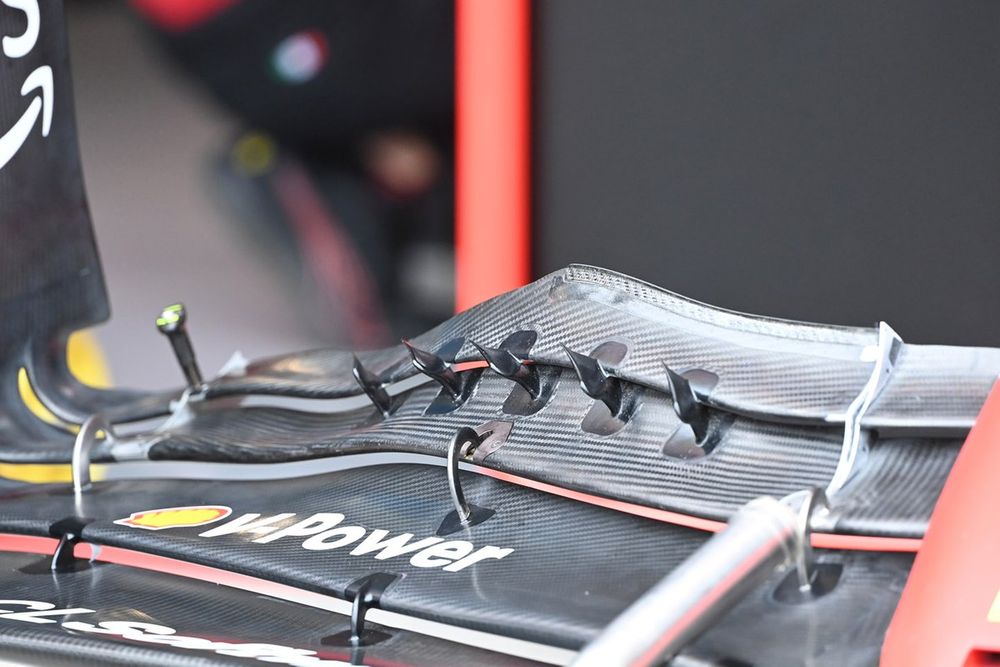
Photo by: Uncredited
Ferrari SF-23 technical detail
Another angle showing the slot gap separator brackets and how they might infer more outwash.

Photo by: Uncredited
Ferrari SF-23 technical detail
The SF-23’s nose without the vanity panel in place shows how the inner crash structure and outer panels are packaged.
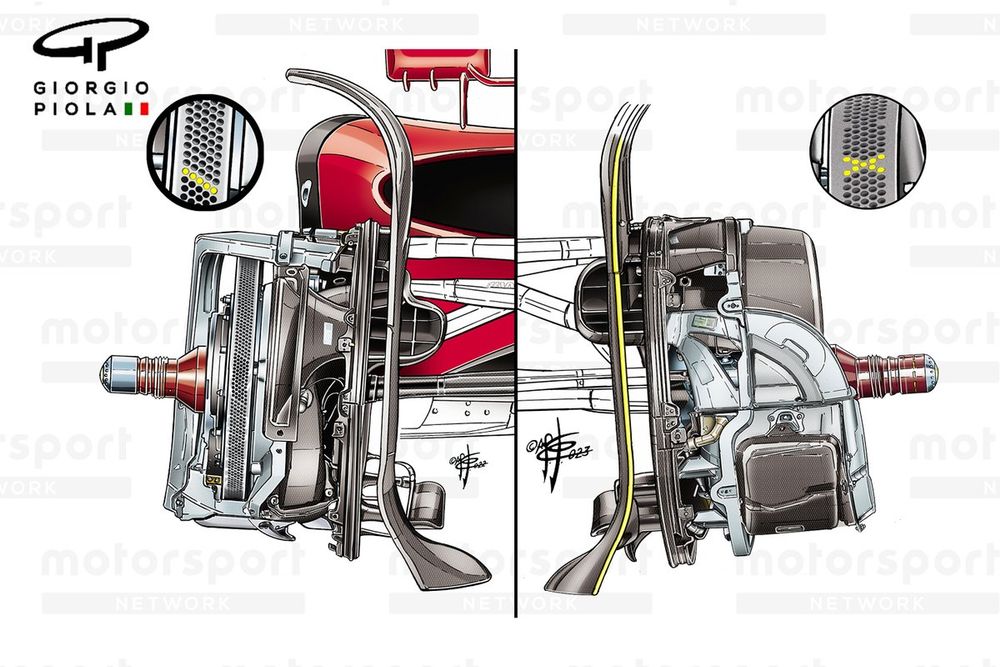
Photo by: Uncredited
Ferrari SF-23 detail
Ferrari rigged the SF-23 with more sensors in Baku to gather additional data.
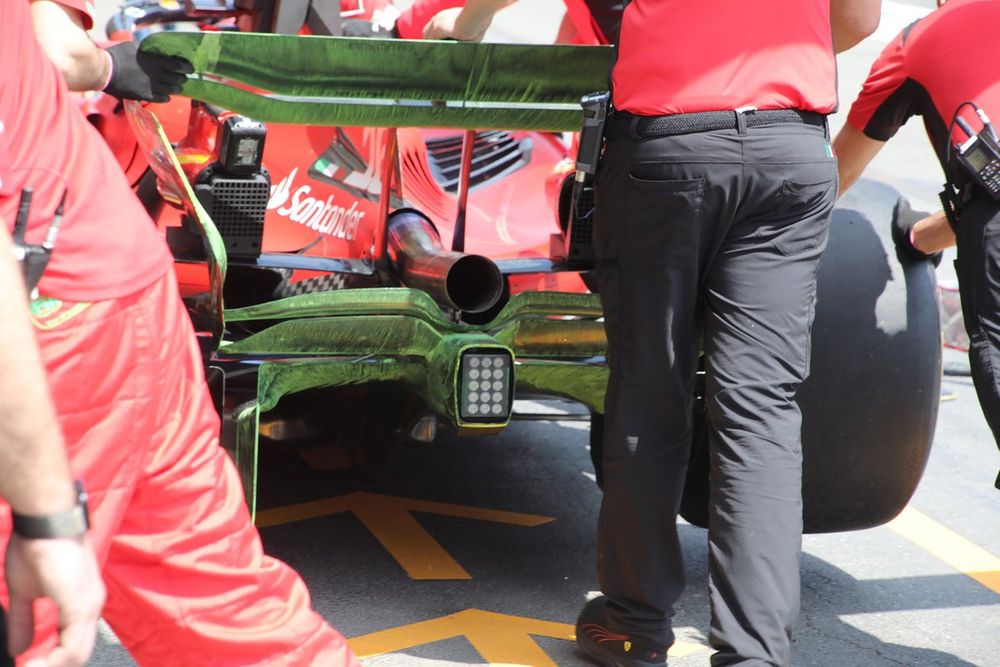
Photo by: Giorgio Piola
Ferrari SF-23 rear detail with flow-vis paint
Flo-viz paint was also used as a means of getting visual confirmation of performance on the rear wing, beam wing, diffuser, etc.

Photo by: Giorgio Piola
Ferrari SF-23 front brake comparison
A comparison of the F1-75 front brake arrangement (left) and the SF-23 (right) shows how the Scuderia opted to move the caliper into the low-slung position, to adopt the disc fairing. Notably a new drill pattern was also favoured to better help control temperatures across a broader range.
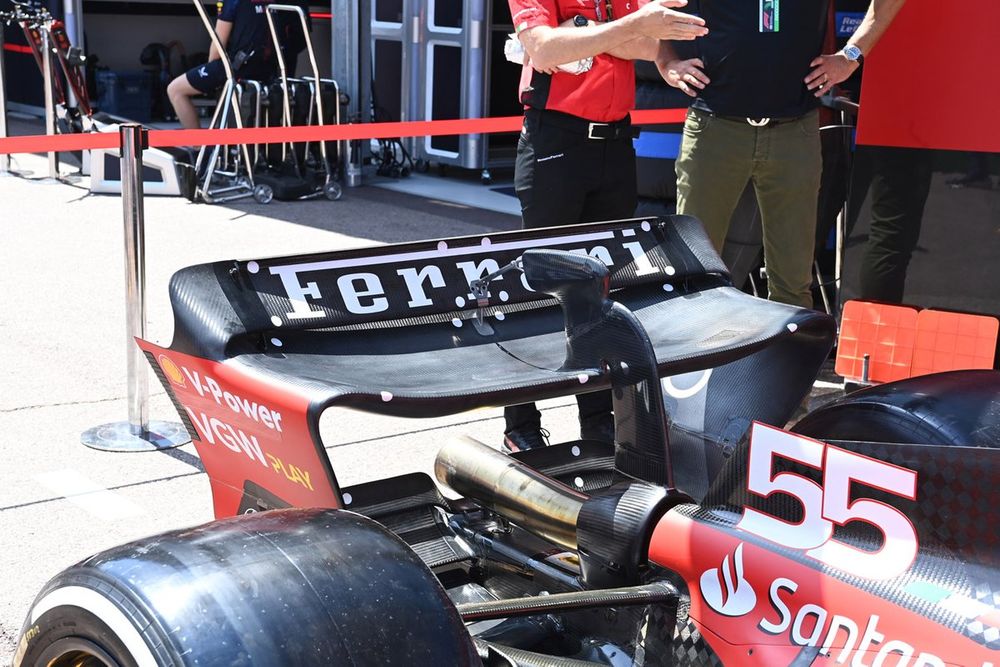
Photo by: Uncredited
Ferrari SF-23 technical detail
Ferrari’s high downforce rear wing offering for the Monaco Grand Prix featured a single mounting pillar.
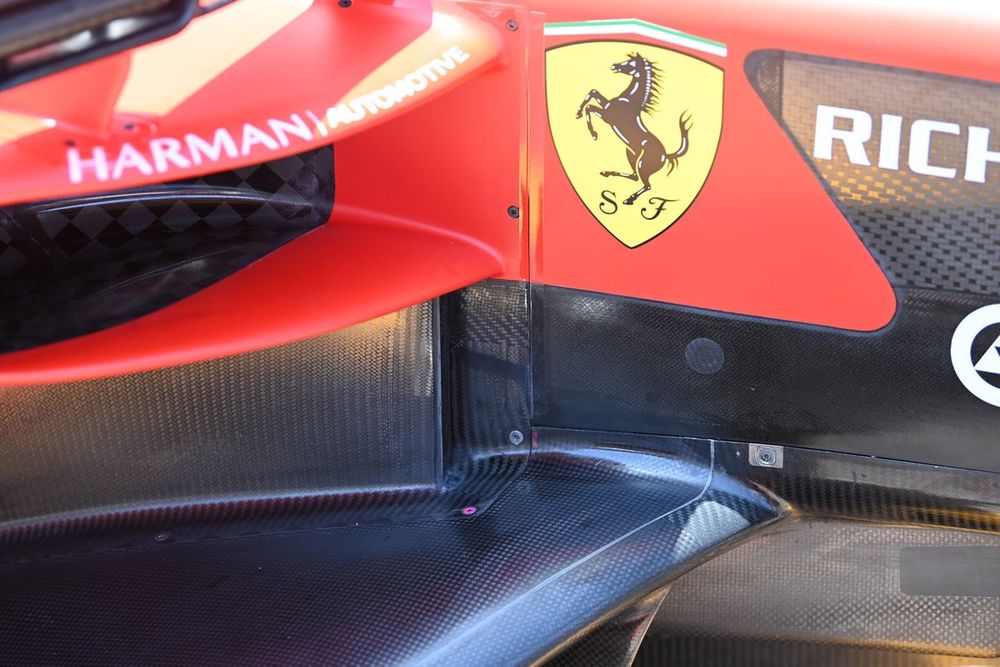
Photo by: Uncredited
Ferrari SF-23 technical detail
A close up of the chassis duct beneath the main sidepod inlet.
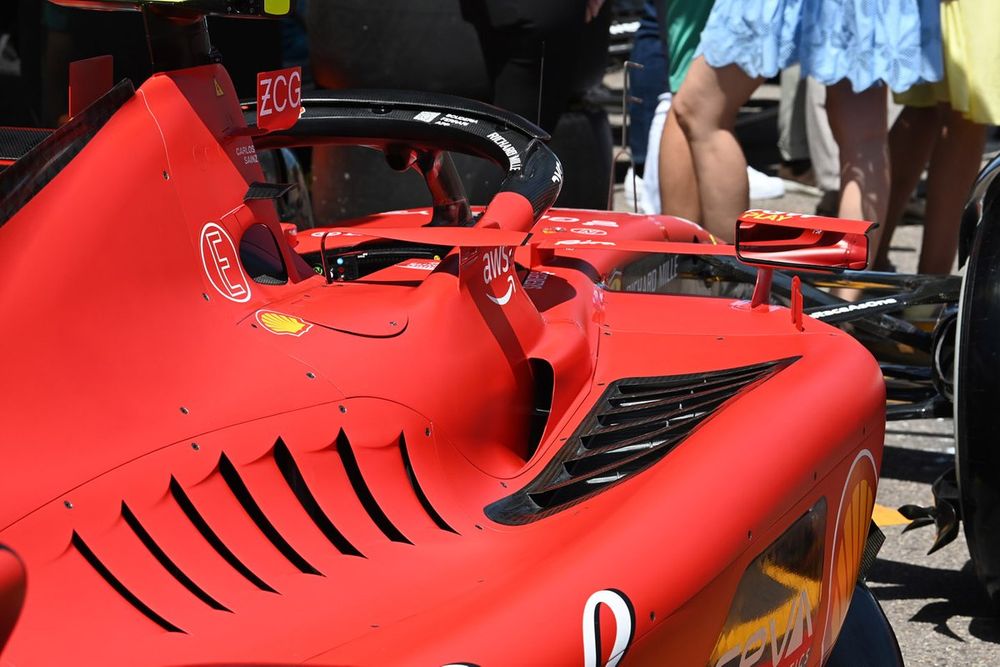
Photo by: Uncredited
Ferrari SF-23 technical detail
A close up of the outlet from the chassis duct and the two cooling gill panels within the sidepod’s bathtub.
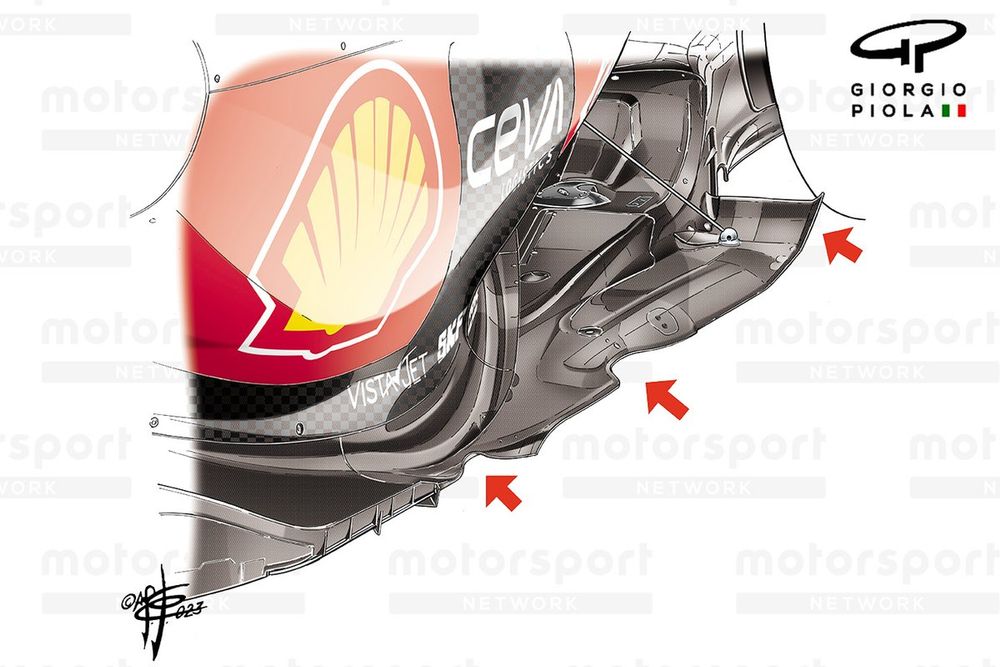
Photo by: Giorgio Piola
Ferrari SF-23 floor detail
The SF-23’s floor edge had two cutouts to create a separation point in the centre, with the rear portion of the floor both tapering inwards and upwards.
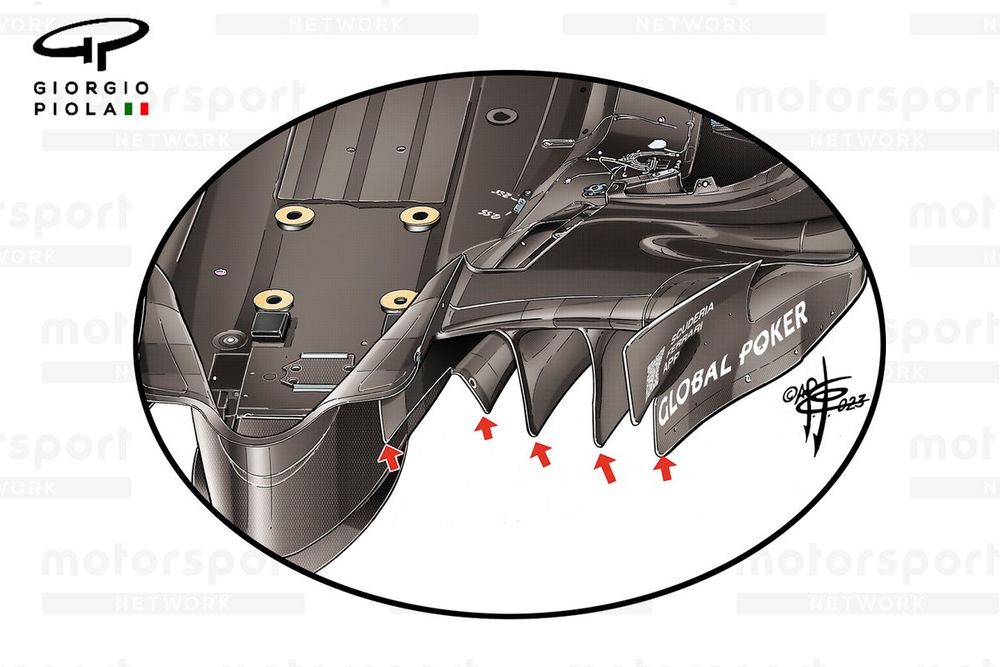
Photo by: Giorgio Piola
Ferrari SF-23 floor front
The leading edge of the Ferrari SF-23’s floor and the floor fences.
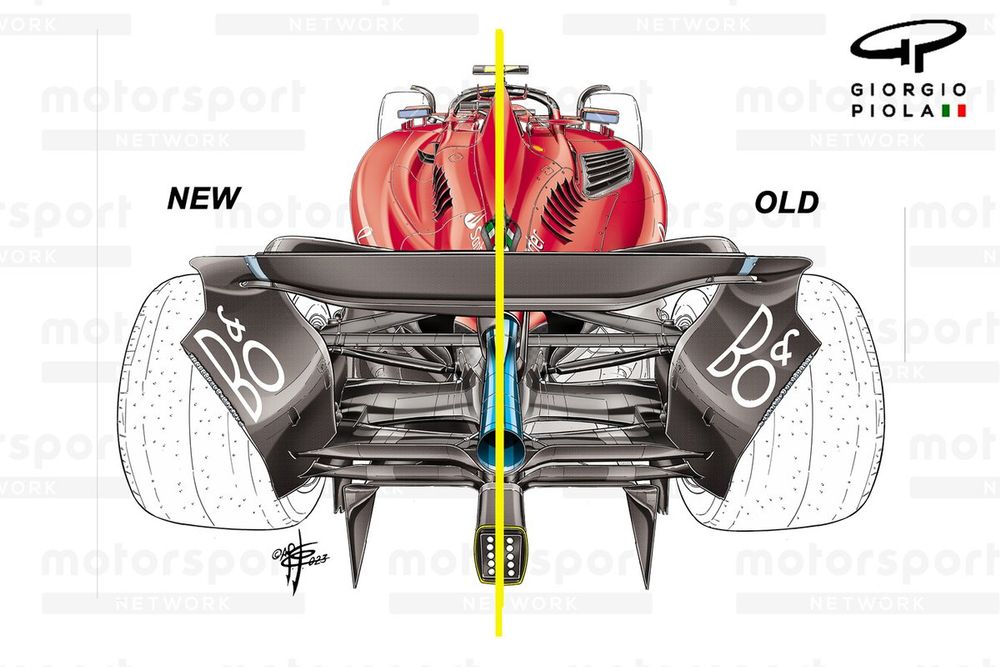
Photo by: Giorgio Piola
Ferrari SF-23 comparison Spanish GP
A new sidepod package arrived for the SF-23 at the Spanish Grand Prix, as the team moved away from their bathtub-style solution and adopted something more akin to the downwash ramped solutions many of their rivals were now using.
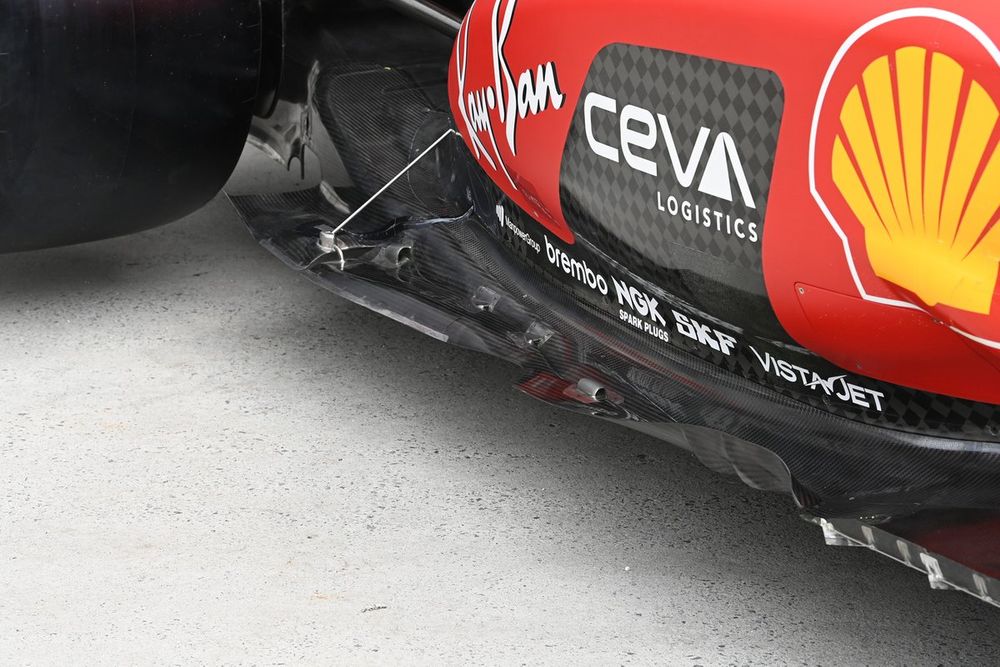
Photo by: Uncredited
Ferrari SF-23 detail
The revised floor edge on the SF-23 featured an elongated edge wing with an upturned section at the front, while a metal bracket was used to connect the rearmost section of the floor with the edge wing.
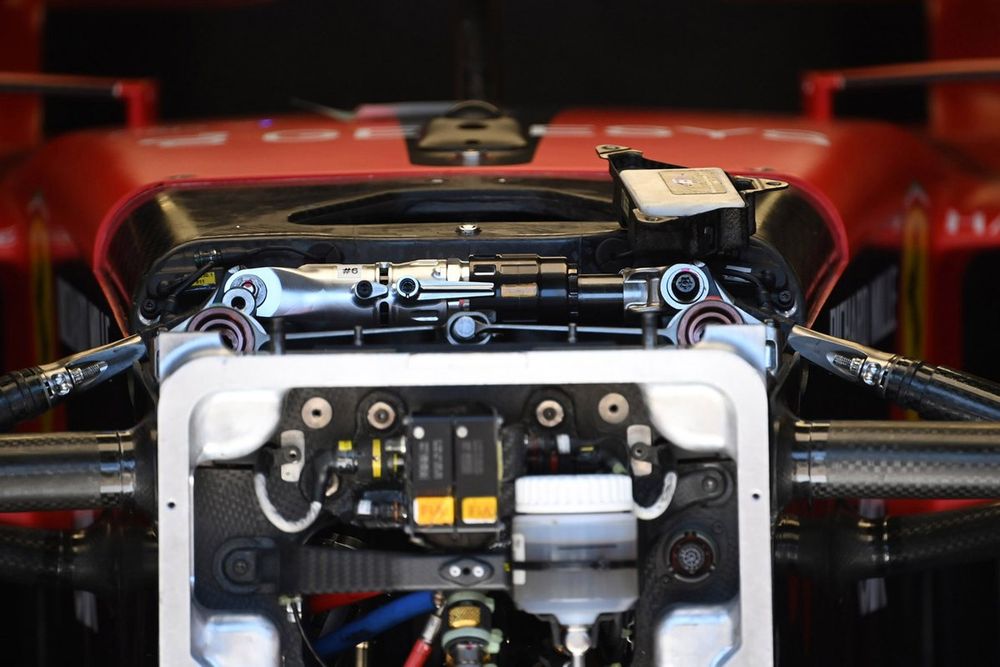
Photo by: Uncredited
Ferrari SF-23 technical detail
A close up of the SF-23’s chassis without the vanity panel in place allows us to see some of the inboard suspension elements.

Photo by: Giorgio Piola
Ferrari SF-23 Detail
A close up of the SF-23’s wing mirror and the surfaces that wrap around it.
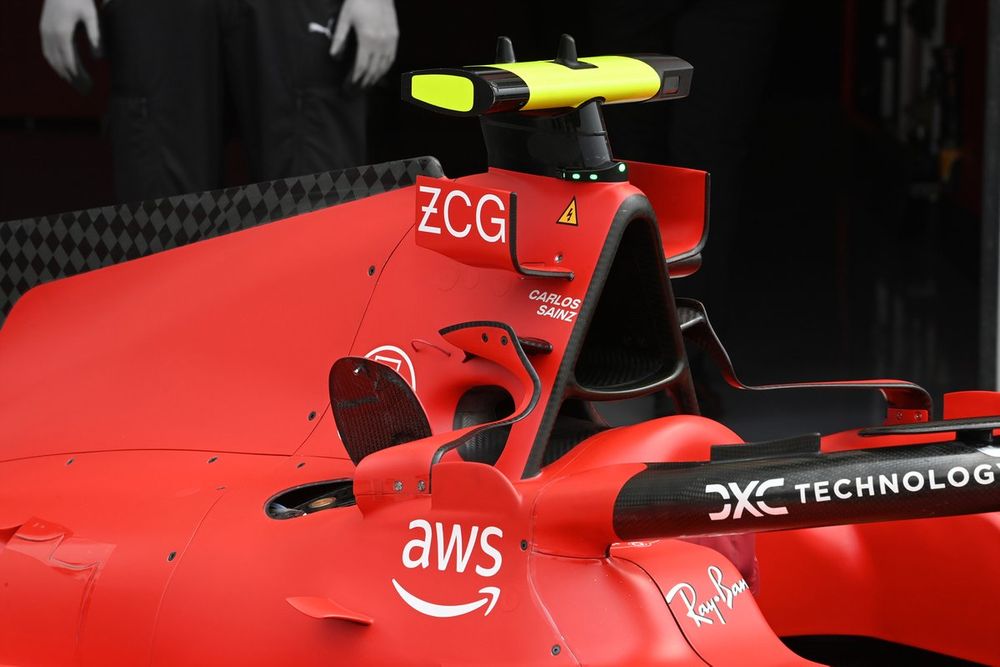
Photo by: Uncredited
Ferrari SF-23 detail
A close up of the SF-23’s halo and airbox region which is littered with flow adjusting fins and winglets.

Photo by: Giorgio Piola
Ferrari SF-23 new endplate, Austrian GP
A new front wing design was employed at the Austrian Grand Prix, with the C-shaped cutout in the endplate filled in once more and a small winglet incorporated instead. The shape of the endplate’s leading edge was altered too (dotted line).
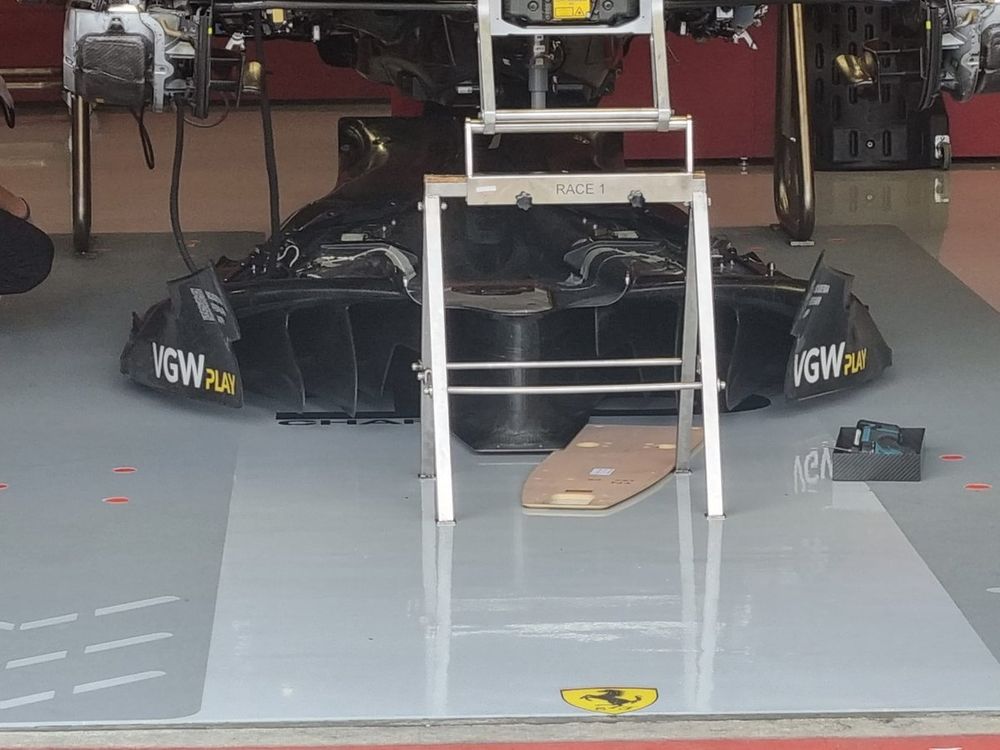
Photo by: Giorgio Piola
Ferrari SF-23 technical detail
A look at the leading edge of the floor and floor fences with the floor left detached from the chassis as the car is worked on in the garage.
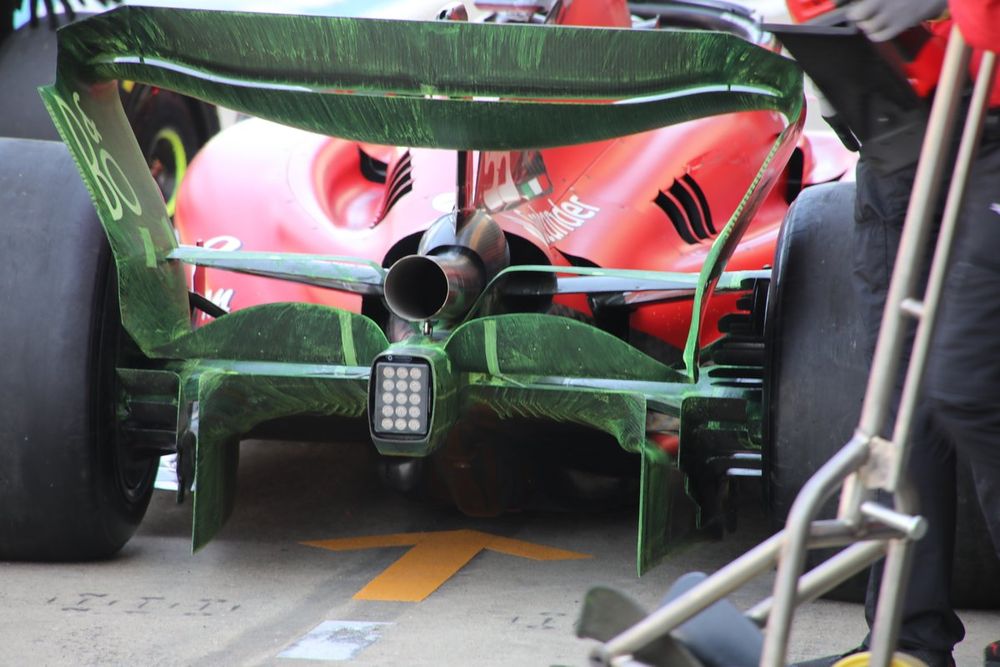
Photo by: Giorgio Piola
Ferrari SF-23 technical detail
Ferrari employed a bi-plane style beam wing arrangement at the British GP, with a slatted upper element set forward of the lower element.
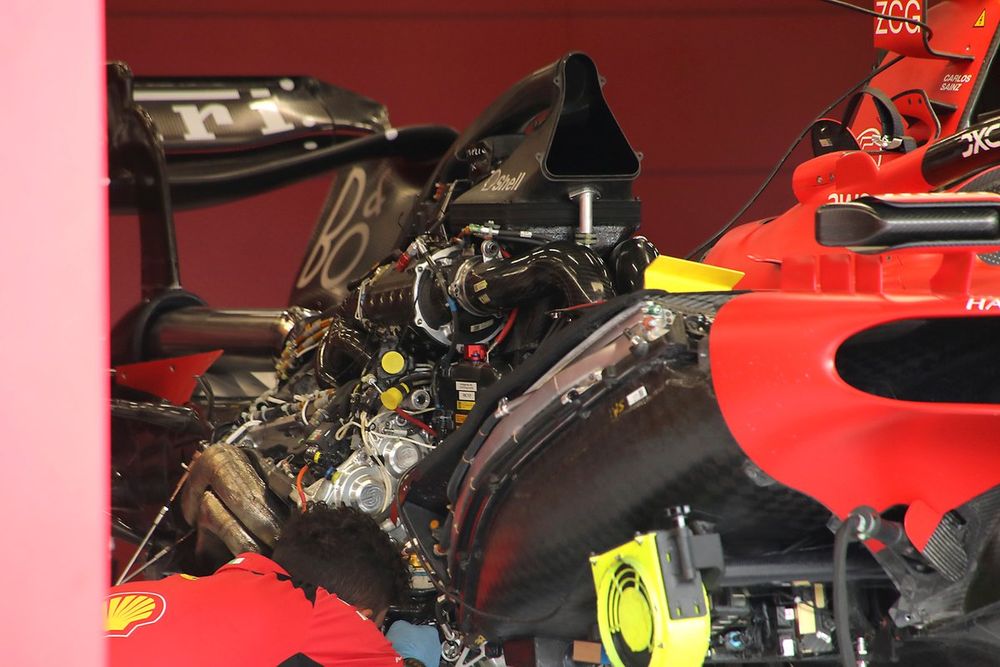
Photo by: Giorgio Piola
Ferrari SF-23 technical detail
A look at the power unit before it’s pushed into place behind the chassis.

Photo by: Giorgio Piola
Ferrari SF-23 technical detail
Mechanics install a larger camera pod on the front wing so that more equipment can be installed to monitor front wing flex.
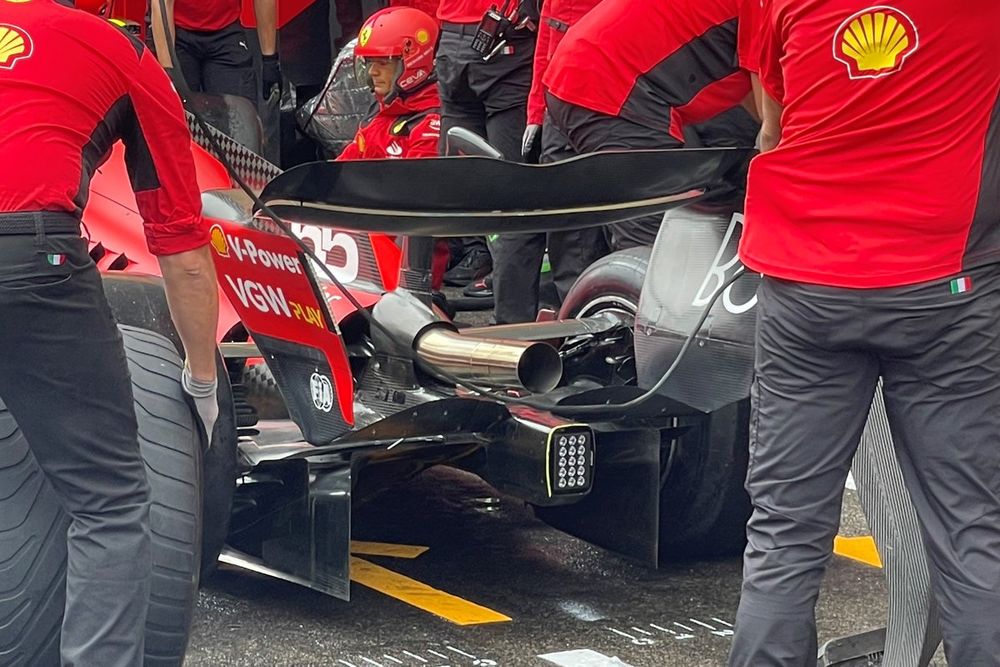
Photo by: Matt Kew
Ferrari SF-23 technical detail
Ferrari trialled a single lower beam wing element on the SF-23 at the Hungarian Grand Prix.
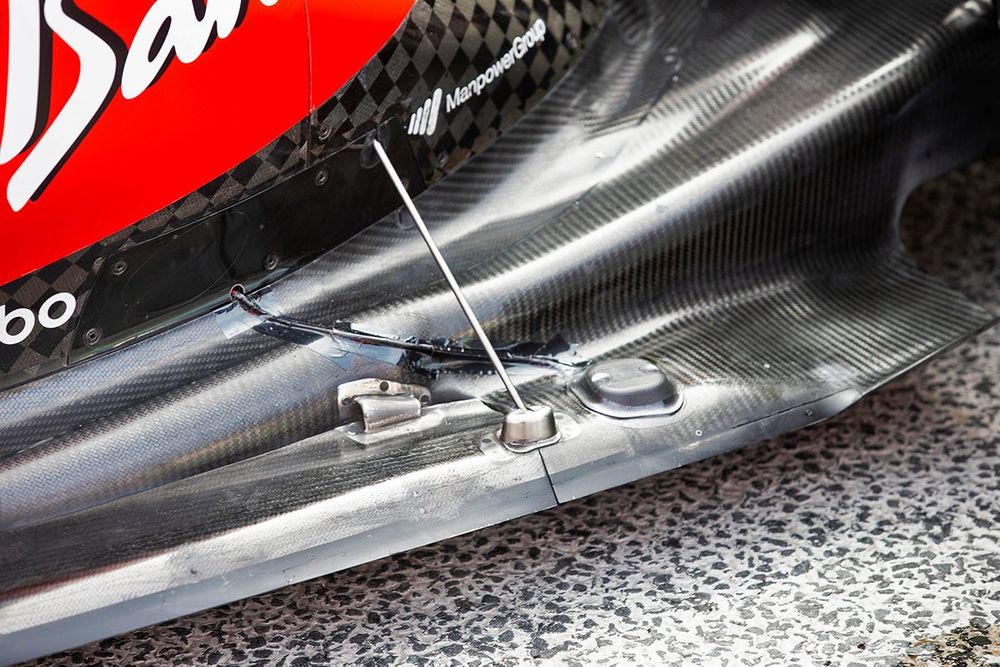
Photo by: Uncredited
Ferrari SF-23 detail
A close up of the rear section of floor on the SF-23 with the floor connecting block for the metal stay now setup as a bridge between the floor and edge wing.

Photo by: Giorgio Piola
Ferrari SF-23 rear wing detail, Belgian GP
A new rear wing design was introduced at the Belgian Grand Prix, as Ferrari presented its version of the open-ended tip section solution that many of their competitors had already raced. A central cutout was also present on the trailing edge of the upper flap, with a Gurney also applied (see insets for comparison with regular specs).

Photo by: Giorgio Piola
Ferrari SF-23 rear wing
Ferrari’s rear wing for the Italian Grand Prix was simply a 2022 redux, with the team likely happy to save the resources required to develop a bespoke solution.
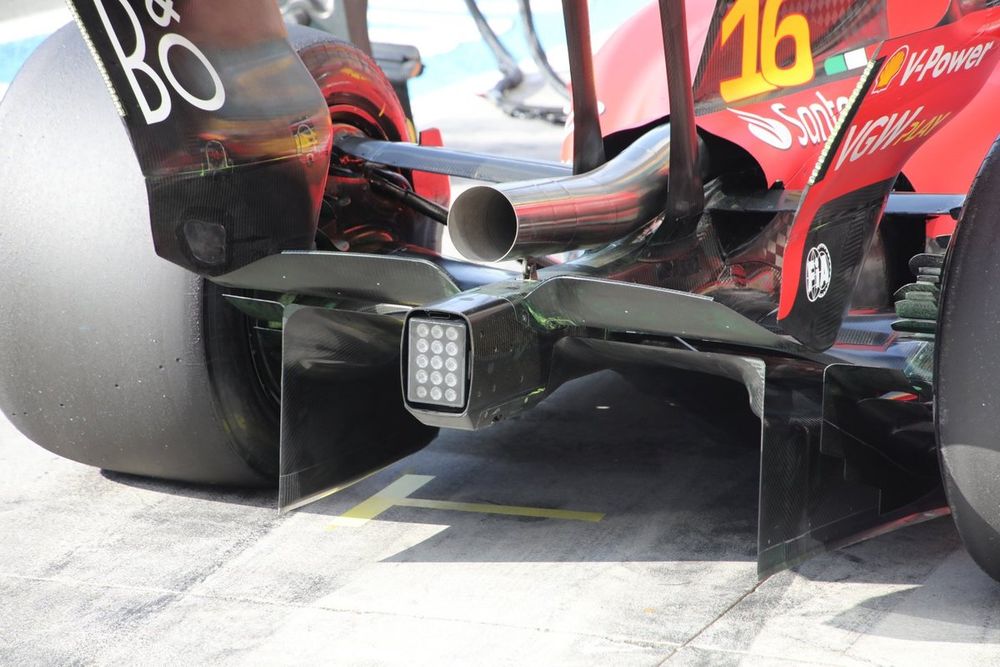
Photo by: Giorgio Piola
Ferrari SF-23 technical detail
A single element beam wing was selected and paired with the low downforce rear wing at the Italian Grand Prix.

Photo by: Filip Cleeren
Ferrari SF-23 technical detail
The SF-23’s upper flap on the front wing was also trimmed heavily to help match downforce levels front-to-rear considering the choice made at the rear of the car.
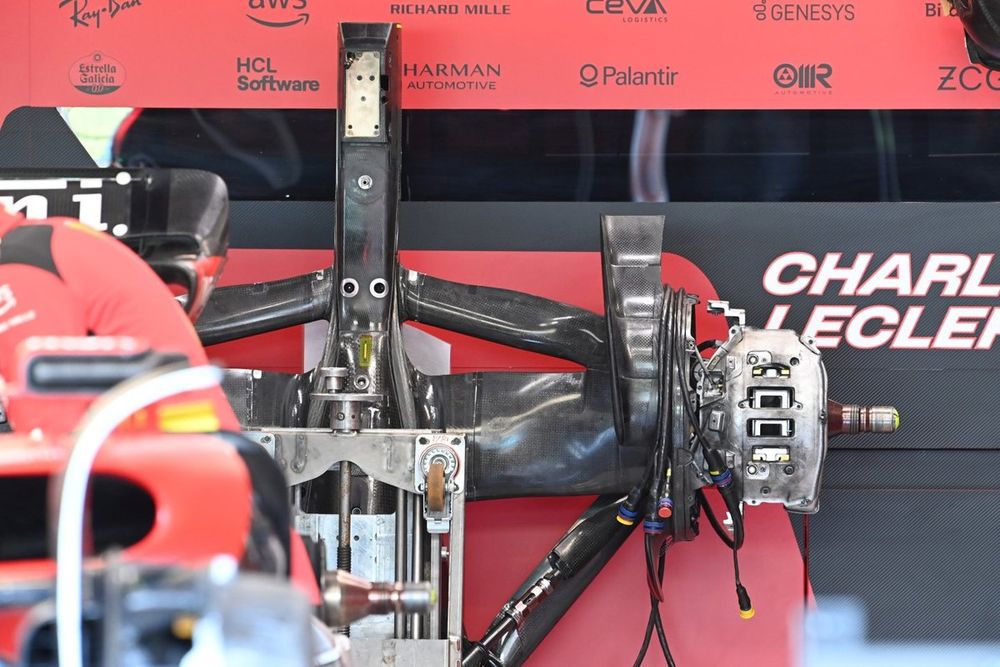
Photo by: Uncredited
Ferrari SF-23 technical detail
A rare glimpse of the rear crash structure, suspension and brake assembly on the SF-23 as it’s stood upright in the garage.
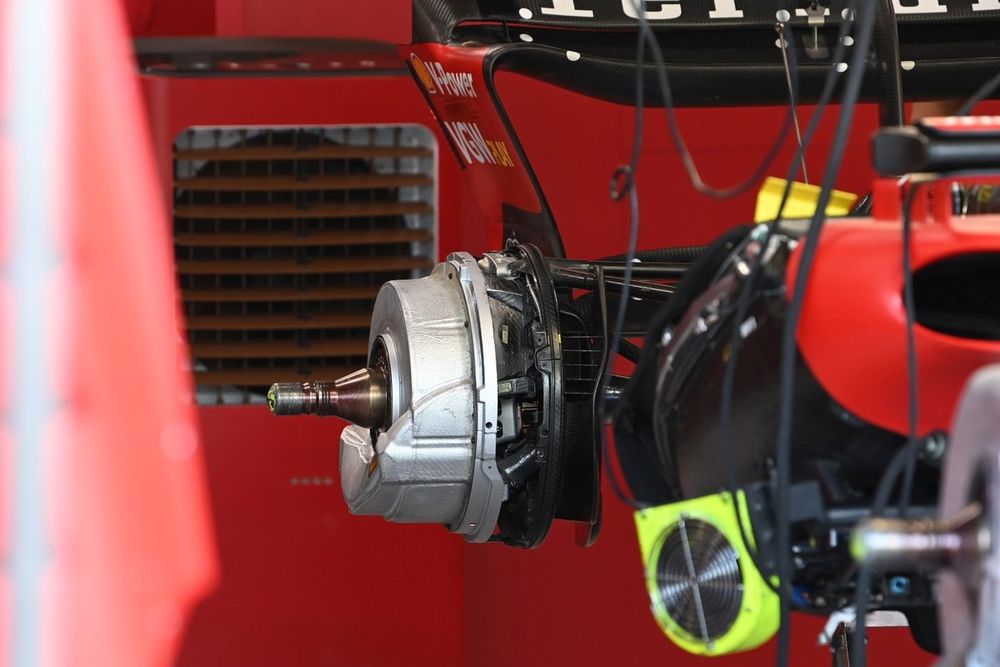
Photo by: Uncredited
Ferrari SF-23 technical detail
The rear brake disc and caliper fairings were heat treated with a silver paint.

Photo by: Uncredited
Ferrari SF-23 technical detail
An unusual view of the front wing without the two moveable flaps not in place.
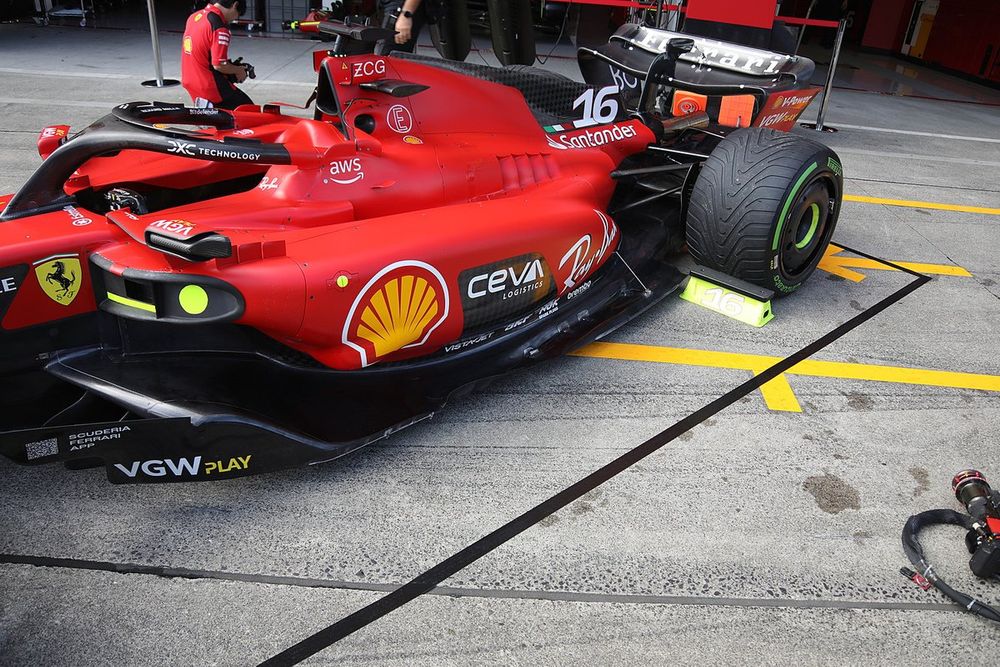
Photo by: Giorgio Piola
Ferrari SF-23 technical detail
An overview of the SF-23 where the team made changes to the floor, floor fences and the diffuser’s sidewall.
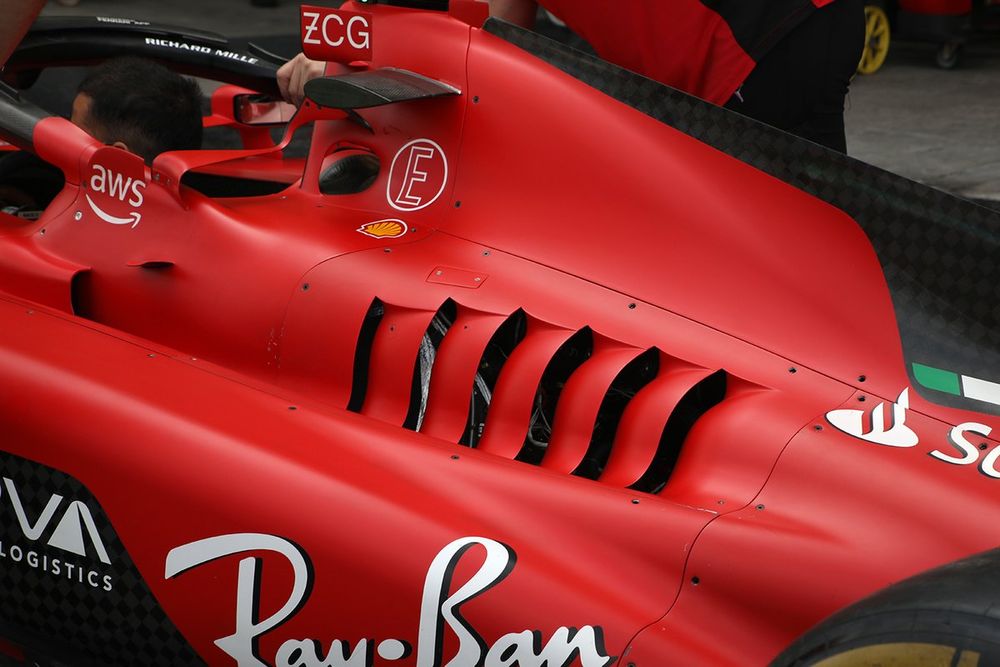
Photo by: Giorgio Piola
Ferrari SF-23 detail
Larger gills were employed in Mexico to help with cooling in the rarefied air.
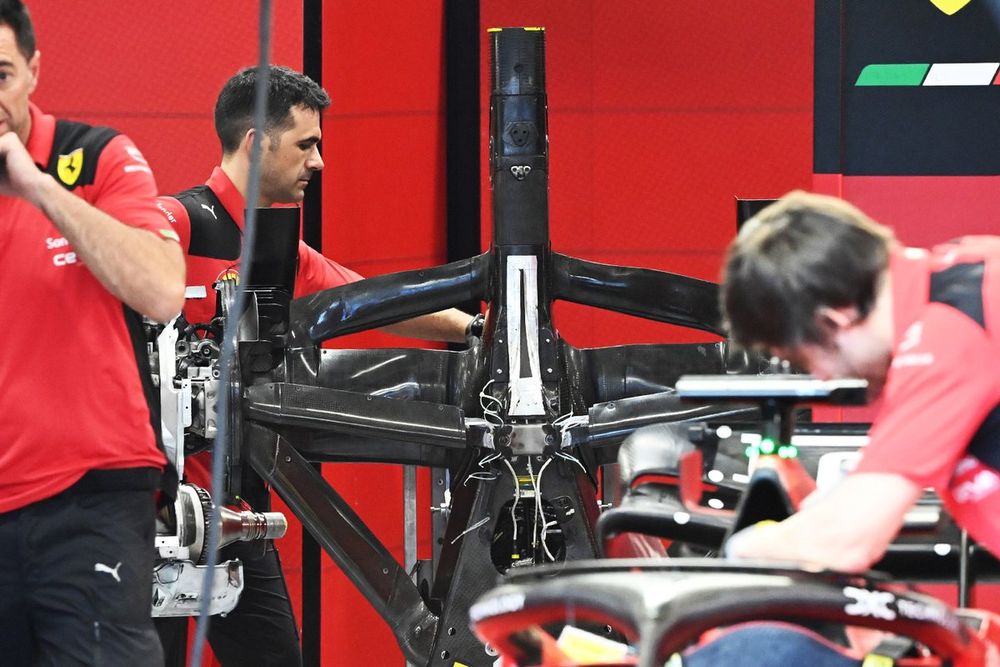
Photo by: Uncredited
Ferrari SF-23 detail
The rear crash structure, suspension and rear brake assembly from above.
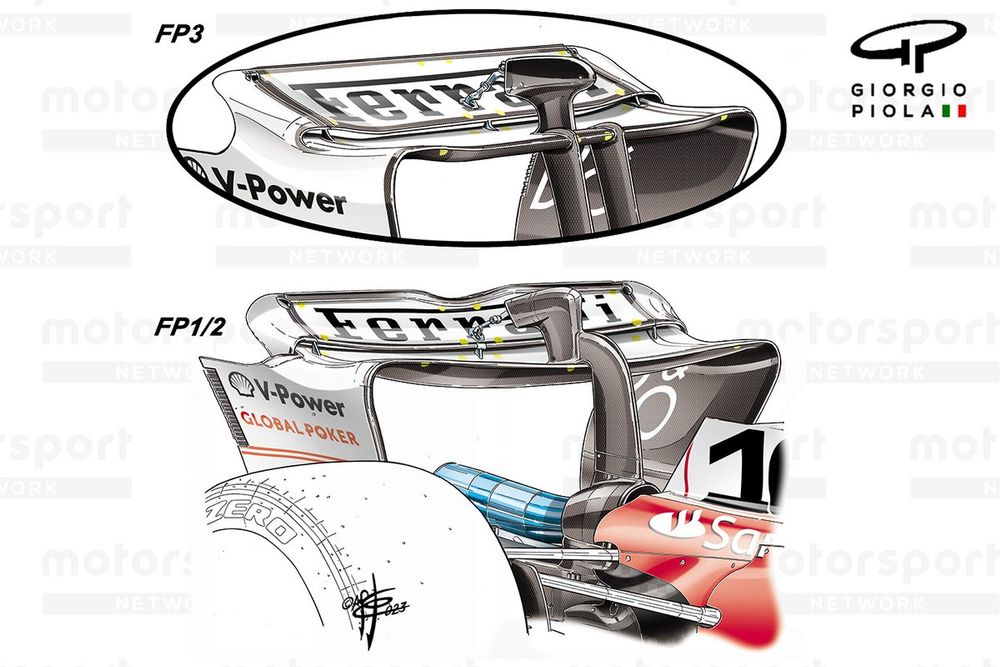
Photo by: Giorgio Piola
Ferrari SF-23 rear wing comparison, Las Vegas GP
The SF-23 was outfitted with two solutions at the Las Vegas Grand Prix, as the team looked for the right balance between the downforce required (Belgian GP specification) versus the straightline speed advantage that could be garnered (Italian GP spec).
Here’s the list of the components that Ferrari listed as having changed in the car presentation document prior to each race.
- Saudi Arabia
-
- FWEP
- Floor edge
- Beam Wing
- Australia
- Azerbaijan
- Miami
- Monaco
- Spain
- Floor
- Sidepods (gulleys)
- Rear wing
- Canada
- Austria
- Great Britain
- Hungary
- Front wing (Reprofiled and full width Gurney)
- Belgium
- Netherlands
- Italy
- Singapore
- Japan
- Floor — fences, edge, mid floor and diffuser sidewall
- Qatar
- USA
- Mexico
- Additional cockpit louvres
- Rear cooling exit Gurney
- Brazil
- Las Vegas
- Abu Dhabi